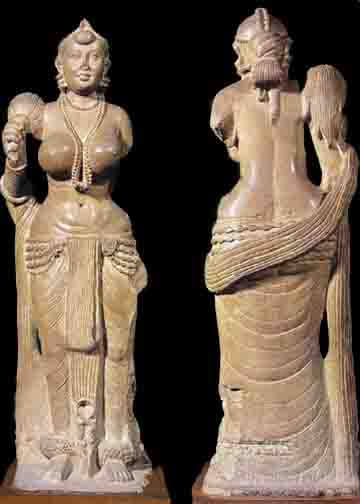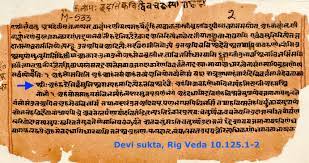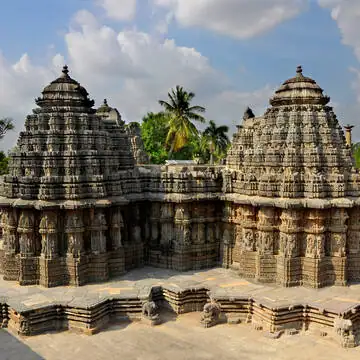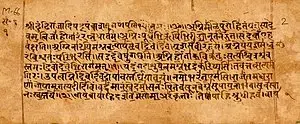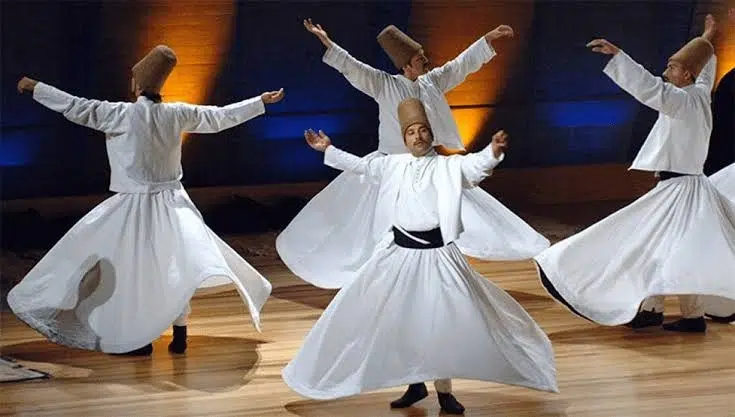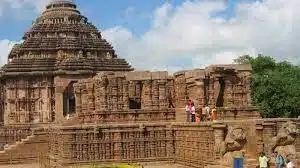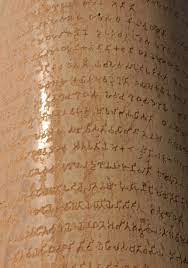Indiasn Caves
Three phases of caves Architecture
1st phase (2nd B.C. to 2nd Century A.D.)
- In this phase the construction was exclusively related to Buddhism and Buddha was represented symbolically e.g. Lotus, Wheel etc.
- The examples of this phase include Ajanta, Karla, Bhaja, Kanheri, Nasik, Bedsa caves.
- It can be concluded that an important connection existed between the religion and commerce, as Buddhist missionaries often built monasteries (caves) in closer proximity to the major trade routes. Some of the caves were also commissioned by wealthy traders resulting in the interiors of the caves being more elaborate.
2nd phase (5th to 7th century A.D.)
- Buddha was personified and the plan of excavations-specially for chaitya remained the same as before but viharas underwent some changes like an image of Buddha was housed.
- By the 5th century, rock-cut cave temples continued to be built in parallel along with free-standing structural temples.
3rd phase (7th to 10th century A.D.)
- The Buddhist architectural traditions were also extended by Hindus and Jains along with some modifications which were suitable for their rituals.
Types of Indian Caves
Caves in India are usually associated with three different religions, namely Buddhism, Hinduism, and Jainism and reflect architectural variance in accordance with respective religions.
- Buddhist Caves
- Buddhism became the dominant religion in the 3rd to 2nd century B.C. There were three characteristic forms of Buddhist architecture which developed around this period – the monumental funerary mound or Stupa, hall of worship or the Chaitya and the monastery or Vihara. Since the Buddhist and Jain Monks usually stayed away from the cities and towns, therefore, Chaityas and Viharas were developed along the hillside. The earliest caves comprising of cave temples that are associated with Buddhism include the Karla Caves, the Kanheri Caves, the Bhaja Caves, the Bedsa Caves, and the Ajanta Caves.
- Hindu Caves
- The Hindu caves that are located at different places across India are sort of extensions of Buddhist cave architecture with of course certain alterations in architecture and design suiting the Hindu customs and traditions. The phase of excavation of these caves is from 4th century AD to 8th century AD. Themes from great Hindu epics like the Ramayana and the Mahabharata are depicted in the structures. The most prominent features of Hindu cave architecture are the presence of mandapa and Ratha (chariot) that developed during the Dravidian period. While the mandapa hewn out of a rock is a columned hall having two or more compartments meant for the deity, the Ratha is a shrine chiseled out of a monolithic rock.
- Jain Caves
- The Jain caves located in different sites across the Indian subcontinent marked the end of cave architecture. Although it is difficult to trace the earliest phase of Jain cave architecture, it is generally considered to be between 6th century AD and 12th century AD. The highly embellished sculptures of these caves illustrate the tales of Tirthankaras of Jain Pantheon. Elaborately painted ceilings are found in some Jain caves like the ones in Ellora in Maharashtra and Sittanavasal in Tamil Nadu.
List of Important Indian Caves
Ajanta Caves
- This cave is located in Aurangabad district of Maharashtra.
- Ajanta has 29 entirely Buddhist caves of which 25 were used as Viharas or residential caves while 4 were used as Chaitya or prayer halls. They were excavated in the horseshoe curve of a hillside.
- Since 1983, the Ajanta Caves have been a UNESCO World Heritage Site.
- All three kinds of art combined – sculpture, architecture, and paintings(mural paintings).
- The mural paintings, in particular, are extremely expressive and depict various emotions through forms, poses and gestures. They are based on Jataka tales narrating the lives of Buddha.
- Mural paintings of Ajanta use fresco technique. In fresco technique, the surface wall is coated with a thin layer of lime plaster on which the paintings are drawn with watercolor when the surface is still wet.
- The painting of Bodhisattva Padmapani from cave 1 is a renown masterpiece.
- Famous fresco paintings of Ajanta are dying princess, flying apsara and preaching Buddha.
- The earliest caves date from 2nd century B.C. while others are of as late as 7th century A.D.
- The Ajanta caves can be divided into 2 phases i.e. Saatavahana phase and Vakataka Phase.
- In the first phase, Chaityas and Viharas were carved out in the second century BC, under the patronage of Saatavahana Kings and this phase is often known as the Hinayana phase, as a symbolic representation of Buddha was done. In this phase more, the focus was given on stupa and figurative sculpture was neglected. The construction under the second phase was done during Gupta and Post Gupta periods (in 5th and 6th century AD) under the rule of the Vaktaka Kings. Since in this phase Buddha was depicted as a human thus it was also known as Mahayana Phase.
- Textual data indicate that the monks employed this site as shelters during rainy season while the pilgrims and merchants of ancient India used it as a resting place.

Ellora Cave
- Ellora caves are located in Aurangabad district of Maharashtra is a group of 34 caves constructed in between 5th to the 8th centuries A.D during the rule of the Kalachuri, Chalukya and Rashtrakuta dynasties.
- It is a UNESCO World Heritage Site known for Hindu, Buddhist and Jain cave temples. The 17 Hindu (caves 13 29, Caves No. 14 and 15 are famous and are known as Ravan Ki Khai and Dasavatar caves respectively), 12 Buddhist (caves 1 12) and 5 Jain (caves 30 34, Jaina caves include Indra Sabha and Jagannath Sabha ) caves, built in proximity, demonstrate the religious harmony prevalent during this period of Indian history.
- It is locally known as ‘Verul Leni’.
- This also a rock-cut monastery by the Buddhists.
- It is famous for the largest monolithic excavation in the world- the great Kailasa.
- The hills in which the caves are carved forms part of the Sahyadri ranges of the Deccan.
- It is a UNESCO World Heritage Site.
- Kailasa Temple – Cave 16 in Ellora is the largest single monolithic excavation in the world. It is a sculpture on the wall of Kailash temple depicting Ravana shaking Mount Kailash.
- All three forms of Art are combined in these caves: Architecture, Sculpture, Paintings.
- Buddhist caves having many images belonging to Vajrayana Buddhism.
- Ajanta also has the excavated double story caves but at Ellora, the triple story is a unique achievement.
Elephanta Caves
- It is located on Elephanta Islands in Mumbai and belong to the 8th century A.D and they are in the same style as those of Ellora.
- There are seven cave excavations in the Elephanta group.
- It was declared a UNESCO World Heritage Site in 1987.
- The caves are carved from solid basalt rock.
- The Elephanta Caves were originally supposed to be a Buddhist site but later these caves were dominated by the Shaivite faith.
- They are famous for their sculpture (show slenderness in the body, with stark light and dark effects) especially for the great Trimurti figure of Shiva (Shiva is akin to the Trimurti figure of Brahma, Vishnu and Mahesh) and some other notable sculptures include Ravana shaking the Kailash, Tandav dance of Shiva, Ardh-narishwara etc. Additionally, it was declared a UNESCO World Heritage Site in 1987.
- There are two groups of caves at Elephanta, the first one being a large group of five Hindu caves containing rock cut sculpture and representing Shaiva, while the second one, is a smaller group of two Buddhist caves.
- These caves also show some resemblance with 8th-century Kailasha Temple built by Rashtrakuta dynasty.
Barabar Caves
Western Indian Architecture of Rock cut caves was influenced by the Lomas Rishi and Sudama Caves which were excavated around 250 BC in Barabar Hills in Bihar (Jehanabad district) during Mauryan Period and are considered the oldest example of rock-cut architecture in India.
- In Barabar hills there are four caves and these caves were constructed during Mauryan Period, particularly reign of Asoka (273-232 BC) and his grandson Dasaratha.
- Initially, the caves were made for the Ajivika sect, but later hundreds of rock-cut caves were made for the Buddhist, Jaina and Brahmanical traditions. In this manner, the Barabar caves were associated with all the major religious ideologies existing at that time e.g. Ajivika sect, Buddhism, Jainism as well as the Hindu religions. This also showcases the policy of religious tolerance, from the two emperors (Ashoka, Dasratha) who themselves were Buddhist.
Four Major Caves at Barabar Hills
- Sudama cave
- Lomas Rishi cave
- Karan Chaupar
- Visva Zopri
Out of these 4 caves, Sudama and Lomas Rishi caves are most important from the architectural point of view. Sudama and Lomas Rishi Caves are the earliest examples of rock-cut architecture in India. Both Sudama and Lomas Rishi caves have wood imitating chambers with their walls polished like a glass mirror.
Sudama / Nyagodh Cave
- It represents the earliest example of rock-cut architecture in India
- It belongs to belong Maurya period
- It is located in Barabar hills
- The cave was dedicated by emperor Ashoka in 261 BC
- It consists of a Rectangular chamber connected to circular chamber
Lomasa Rishi Cave
- It represents the earliest example of rock-cut architecture in India
- It belongs to belong Maurya period
- This cave was carved out of a gigantic rounded granite rock
- It has an arch-like shape frontage copying the contemporary timber architecture
- It is located in Nagarjuni hills
- It belongs to belong Maurya period
- Frieze of elephants
Bhaja Cave
- This is the oldest Deccan rock-cut cave dated on 2nd century BC
- It is located in Maharashtra.
- The inscriptions and the cave temple are preserved as a National Monument
- It is famous for its decorative frontages
- It belongs to the Hinayana Buddhism sect
- Stone carvings are not very deep
- It has octagonal pillars
- In western India, early Buddhist cave is found at Bhaja (near Poona). It is a group of 22 rock-cut caves and depicts a typical early phase of Buddhist architecture marked by deep apsidal hall cut in solid rock, with a row of plain octagonal pillars near the walls.
- The most important structure of Bhaja caves is chaityagriha having an open horseshoe-arched entrance. Another prominent part of the cave is a group of 14 stupas. The stupas have relics of monks who resided and died in Bhaja caves.
Karle cave
- Ancient India Buddhist early rock-cut architecture. Related with the Mahasaṃghika sect of Buddhism.
- It is located in Maharashtra.
- There is a pillar of the Asokan type with a huge sixteen-sided shaft rising over a platform.
- It has a great chaitya hall.
- The Karle caves were made around the beginning of the Christian era and its pattern is similar to the Bhaja caves but is much more developed in size and splendor.
- The Chaitya at Karle is cut 124 feet deep into the rock and it is situated at a distance of two miles north of the Bombay- Poona highway.
- The most prominent cave is Great Chaitya (Cave no. 8). It is the largest rock-cut chaitya in India.
Kanheri Caves
- The Kanheri caves are situated near Bombay and the Chaityas of Kanheri follow the pattern of the Karle Chaitya.
- It comprises of 109 caves carved out of basalt rock. The caves comprise vihara (monasteries), chaitya (halls) and dwellings, and were used by Buddhist monks between the 1st century BC and 10th century AD.
- Further, the influence of Mahayana is evident, as the outer walls of the caves bear images of Buddha.
Pancha Pandava cave
- It is located in Mahabalipuram in Tamil Nadu.
- It is part of the cluster of Monuments at Mahabalipuram.
- It is one of the supreme testimonials to the ancient Vishwakarma Sthapathis which is unfinished.
Cave temple of Mandagapattu
- Mandagapattu is built by Mahendravarman I.
- It is a shrine which holds a significant position in the history of architecture of the Pallavas.
- It is the oldest stone shrine in Tamil Nadu.
Udayagiri and Kandhagiri caves of Odisha
Udayagiri and Khandagiri Caves in Bhubaneshwar, Odisha were patronized by the Kalinga king Kharavela and are also known for the Hathigumpha inscription (in Brahmi script).
- The cave complex has both man-made and natural caves.
- Earliest groups of Jain rock-cut shelters
- The caves of Udayagiri and Khandagiri called lena or leṇa in the inscriptions
- Hathigumpha and Ganeshagumpha are particularly well known due to art reserves of their sculptures and reliefs
- Khandagiri offers a fine view back over Bhubaneswar from its summit.
- Udayagiri and Khandagiri Caves (situated over two adjacent hills, Udaygriri and Khandgiri) are located near the city of Bhubaneswar in Odisha and built around 2nd century BCE during the reign of King Kharvela.
- These caves are supposed to have worked as residential blocks for Jain monks.
- Udayagiri means “Sunrise Hill” and has 18 caves including Rani Gumpha, Ganesh Gumpha, Hathigumpha, Vyaghra Gumpha etc., of which Rani Gumpha is the largest cave while Khandagiri has 15 caves which include Navagiri, Devsabha and Anant Gumpha etc.
- Ranigumpha cave in Udayagiri is double-storied and has some beautiful sculptures.
Bagh caves
- There were nine rock-cut caves, built-in vertical cliff soaring 45 – 50 m above the Baghani River, on the southern slopes of Vindhya Range.
- Caves were established by Buddhist monk Dataka
- These caves are a group of 9 rock-cut monuments situated in Madhya Pradesh, some hundred miles north of Ajanta. They are more impressive than even those of Ajanta.
- All the caves are Vihara and out of 9 caves, only 5 have survived. The most significant cave is Rang Mahal cave (Cave no. 4).
- These caves are famous for their muralpaintings as on the walls of the veranda of a cave, a procession of elephants and a scene of a dancer and women musicians are depicted.
Mandapeshwar Caves
- It is located in on the banks of the Dahisar River in Borivali.
- 8th Century rock-cut shrine dedicated to Shiva.
- The remains of the site include sculptures of Nataraja , Sada Shiva and ardhanarishwara.
- This is the only Brahmanical cave to be transformed into Christian cave.
Junagadh Caves groups
- Located at Junagadh district in Gujarat
- Caves were engraved from Emperor Ashoka’s period up to 1st-4th century AD.
- Three different sites can be found in Junagadh caves these are (1) Khapra Kodiya, (2) Baba Pyare, (3) Uparkot.
- A 30-50 ft high citadel known as “Upar Kot” in front of the prayer hall.
Nashik Caves
- Located near Nashik in Maharashtra
- It is called as Pandavleni Caves/ Trirashmi Buddhist Caves
- It is a cluster of 24 caves carved between the 2nd century BCE and the 2nd century CE
- It is representing the Hinayana Buddhist caves
- These caves also known as Pandavleni caves are a group of 24 caves dating from the 1st century A.D.They were built during the reign of the Satavahana ruler Krishna.
- The caves have images of both Buddha and Bodhisattvas
- Pandavleni caves are symbolic of Hinayana influence since Buddha is represented only through symbols.
Badami Cave temples
- Badami (in Northern Karnataka) cave temples are an excellent example of Chalukyan Architecture, which dates back to the 6th century AD and adorns decorative pillars, embellished brackets, intricately carved sculptures and finely chiseled ceiling panels.
- It is a group of four rock-cut cave temples – 3 Brahminical and 1 Jaina. The Jaina cave temple was built around a century later from the earlier temples.
- The largest cave is Cave no. 3 which is dedicated to Lord Vishnu. It is also the oldest Badami cave.
- Most of temple building activity of Chalukyas was concentrated in Badami, Aihole, Pattadakal and Mahakuta in modern Karnataka.
Udayagiri Caves
- The Udayagiri Caves are twenty rock-cut caves near Vidisha, Madhya Pradesh from the early years of the 5th century CE.
- It is famous for having numerous sculptures on the hill walls.
- The sculpture of Varaha or Boar incarnation of the Vishnu is notable.It caves dedicated to Shiva, Narasimha (half lion, half-man), Narayana (resting Vishnu) and Skanda.
- They are the only site that can be verifiably associated with a Gupta period monarch from its inscriptions.
List of Important Indian Caves
| Caves | State/Region |
| Ajanta Caves | Aurangabad (Maharashtra) |
| Ellora Caves | Aurangabad (Maharashtra) |
| Bagh Caves | Madhya Pradesh |
| Junagadh Caves | Junagadh (Gujarat) |
| Nasik Caves | Nasik (Maharashtra) |
| Udayagiri and Khandagiri Caves | Odisha |
| Mandapeshwar | Borivalli (Mumbai) |
| Udayagiri | Vidisha (Madhya Pradesh) |
| Badami Cave temples | Northern Karnataka |
| Elephanta Caves | Elephanta Island (Mumbai) |
| Karle Caves | Lonavala(Maharashtra) |
| Kanheri Caves | Western Outskirts (Mumbai) |
| Sudama / Nyagodh Cave | Bihar |
| Lomash Rishi Cave | Bihar |
| Barabar Cave | Bihar |
| Bhaja Caves | Maharastra |
Also refer :

